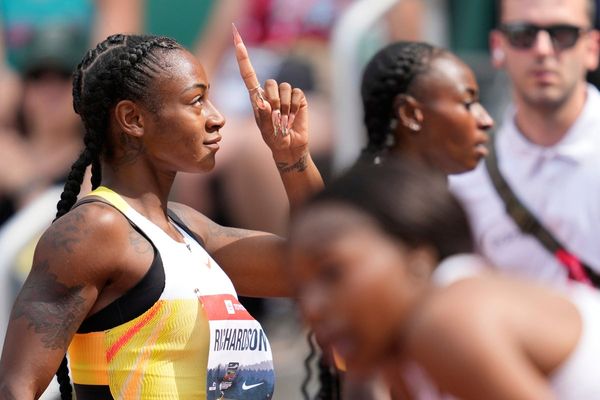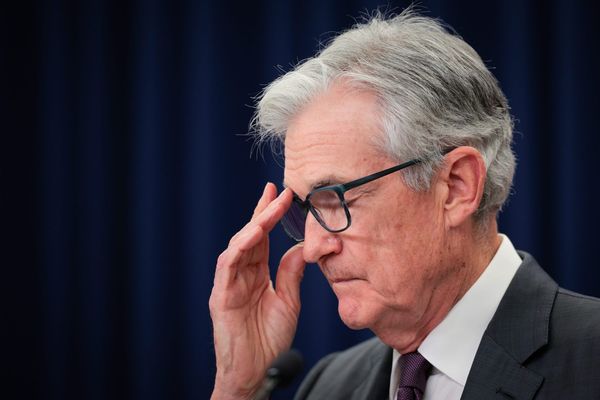STANFORD, Calif. — Stanford University officials announced Tuesday they will reinstate 11 sports programs they had planned to cut, a move that led to an outcry from famous alumni, parents and current athletes as one of the country’s premier sports schools faced a growing controversy.
Stanford officials said an improving financial outlook led to the decision to keep men’s and women’s fencing, field hockey, lightweight rowing, men’s rowing, co-ed and women’s sailing, squash, synchronized swimming, men’s volleyball and wrestling — the programs they had planned to eliminate at the end of the current school year.
“We have new optimism based on new circumstances, including vigorous and broad-based philanthropic interest in Stanford athletics on the part of our alumni, which have convinced us that raising the increased funds necessary to support all 36 of our varsity teams is an approach that can succeed,” Stanford President Marc Tessier-Lavigne said in a statement.
Adam Keefe, a basketball and volleyball star at Stanford from 1988-1992, said Tuesday the outcome was the result of working closely with Stanford officials to find solutions.
“I give the university a lot of credit,” Keefe said. “They were open to a solution that would present a different outcome.”
Keefe, who is married to former Stanford volleyball star Kristian Klein, has three kids playing sports at Stanford. James Keefe is a member of the Cardinal basketball teams while twins Caitlin and Michaela Keefe play on the women’s volleyball team.
The former NBA player who ended his career with the Golden State Warriors was one of six alums who helped lead the effort through a lobbying group called 36 Sports Strong.
The school’s announcement comes a week after current Cardinal athletes filed two lawsuits in federal court in San Jose — one for fraud, intentional misrepresentation and breach of contract for not telling students their sports would be cut. The second action alleged sex discrimination and violation of Title IX law.
Stanford’s statement said the suits did not lead to the decision to reverse course because officials were “far along” in the discussions to find a solution before legal action began.
Retaining all 36 teams will require a large-scale fundraising campaign, school officials said in a letter to the Stanford community.
“We will need to ask for the support of the Cardinal faithful like never before,” Tessier-Lavigne, Provost Persis Drell and athletic director Bernard Muir wrote.
“I am thrilled that we have found a way to continue sponsoring these varsity sports, which are an important part of the fabric of this university,” Muir said in a statement. “I believe the future is extremely bright for Stanford athletics and am eager to begin the important work of galvanizing our community and cementing Stanford’s position of leadership and excellence in intercollegiate sports.”
Lawyers representing the athletes did not immediately return calls and emails asking about the status of the suits.
The sports that were considered vulnerable involved 240 student-athletes and 22 coaches and more than 4,000 alumni whose contributions led to 20 national championships and 27 Olympic medals. They were marked for the budget ax based on a host of factors from cost to fan interest, prospects for success and impacts on student-athlete diversity.
Keefe said it has been humbling knowing he and the alumni have kept an avenue open for current and future Cardinal competitors. The work, he said, means Stanford has a good chance to be represented in the upcoming three Olympics, starting in Tokyo in July.
“The one thing that has come out of this is that there is an enormous grassroots alumni out there to be successful,” Keefe said. “People are so excited to jump back in for these sports.”
A July 2020 letter to the Stanford community noted that its 36 varsity sports are more than almost any other Division 1 university in the country, with the average being half as many, and said the cost of offering so many sports was “not sustainable.”
Even before the pandemic, Stanford said it had projected a $12 million athletic department deficit in the current year. The financial hit of COVID-19 lockdowns of almost $70 million over the next three years.
“Discontinuing 11 sports was a wrenching decision that we enacted with the greatest reluctance,” the Stanford executives said in their letter. “We are pleased now to be on a path to achieve fiscal sustainability for Stanford athletics while preserving opportunities for all of our student-athletes.”
Famous alumni supporting the group include Andrew Luck, Kerri Walsh Jennings and Sen. Cory Booker (D-N.J.), and those who have signed the petition include softball star and ESPN analyst Jessica Mendoza, former MLB pitcher Mike Mussina and professional golfer Michelle Wie West.
36 Sports Strong said Stanford leaders “listened and worked with us to find a better way forward for Stanford Athletics. Champions persevere, and they find new ways to win. That’s what Stanford has done here.”
Keefe said the school now has a better alumni database to find potential donors. He added that working with the university’s development office is the best approach because “this is a school that knows how to raise money.”
Keefe also said Stanford has created a blueprint for schools across the country to follow to save sports programs. He said the fundraising goal is to eventual endow all of the programs that were threatened with elimination.
“It is going to be a great collaboration,” he said.







